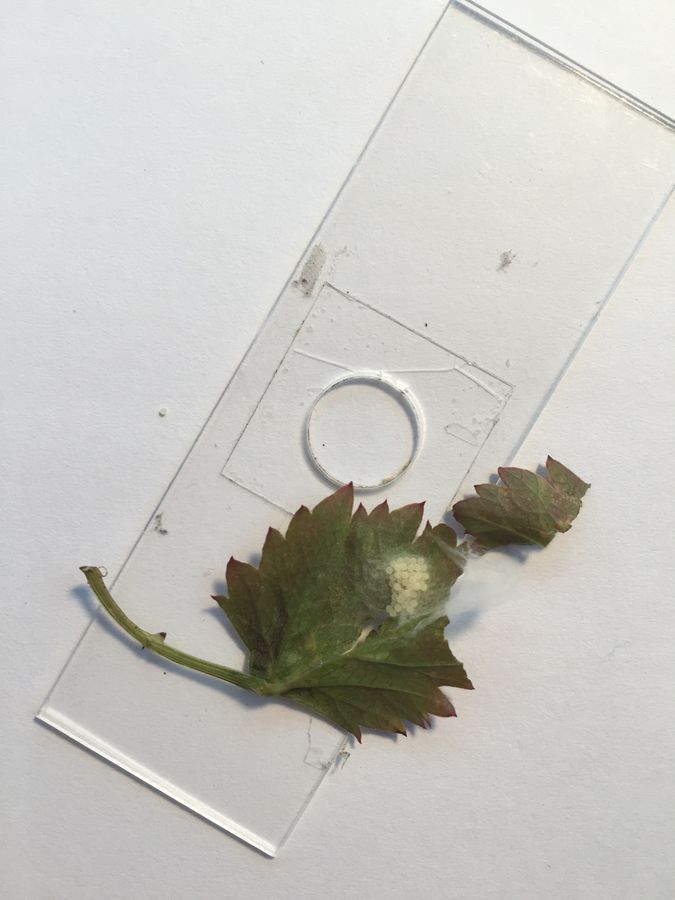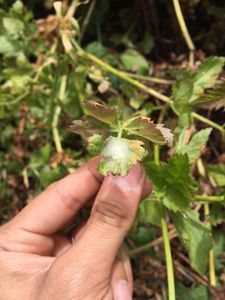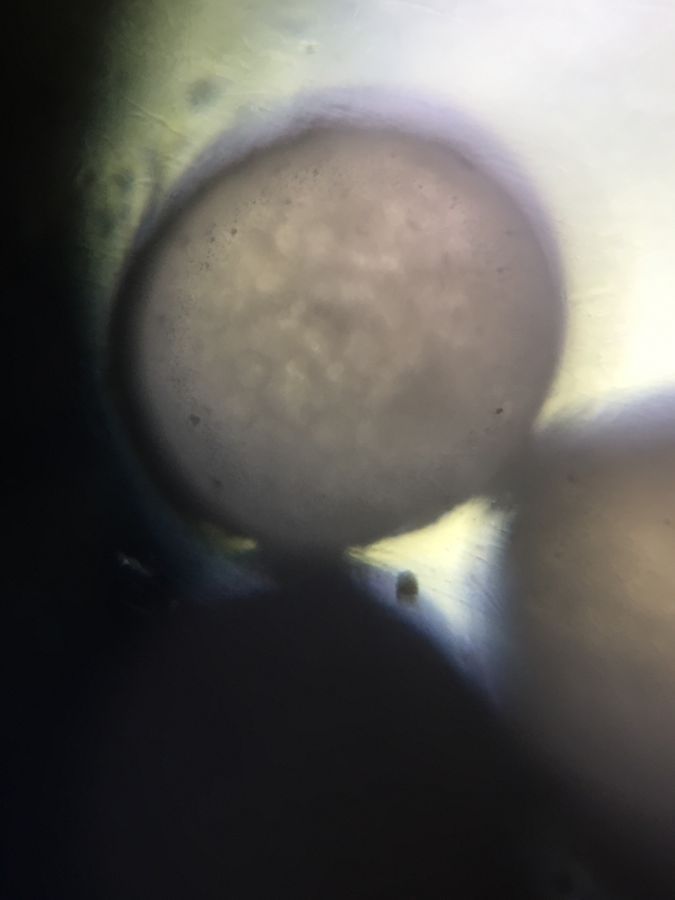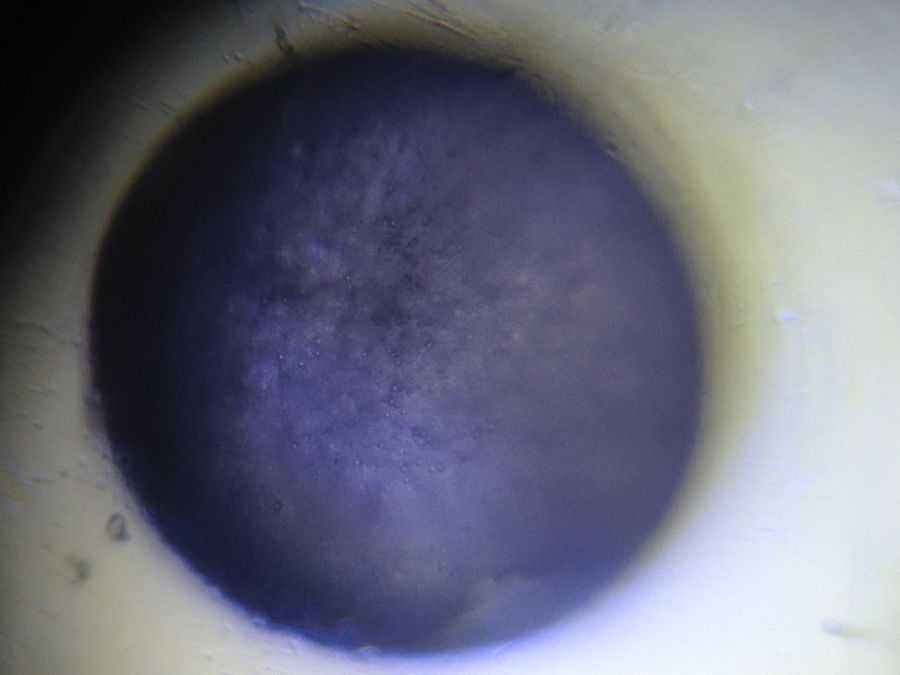Watching spider eggs develop (14hr time lapse video)
 Aug 05, 2015 • 10:31 PM UTC
Aug 05, 2015 • 10:31 PM UTC Unknown Location
Unknown Location 140x Magnification
140x Magnification Microorganisms
Microorganisms
Manu Prakash
I am a faculty at Stanford and run the Prakash Lab at Department of Bioengineering at Stanford University. Foldscope community is at the heart of our Frugal Science movement - and I can not tell you how proud I am of this community and grassroots movement. Find our work here: http://prakashlab.stanford.edu
266posts
1192comments
42locations

Babies are beautiful. Even for an organism like spider (which invoke mixed reaction in everyone); watching a tiny baby spider develop is incredibly beautiful. I get goose bumps talking about it. Also; I have been on a mission to image cell division using almost nothing but a foldscope (no specialized tools); and that led me to think about spiders.
Most recently – I did a small calculation about 20 million spiders in a small field. So where do all these spiders come from – eggs off ourse.
Spider eggs are fascinating. Firstly – they are everywhere (so they are trivial to run into in any garden). Secondly – they are mostly transparent enough to just watch them. So get out and get some spider egg sacs – put them in a foldscope and you get to watch them turning into little spider babies.
Methods:
0. First we have to collect some spider eggs. For a more detailed field survey and guide to collect spider eggs; see my prior post on collecting spider egg sacs in the field.
Here: http://microcosmos.foldscope.com/2015/07/26/20-million-spiders-lake-lagunita/
Most recently – I did a small calculation about 20 million spiders in a small field. So where do all these spiders come from – eggs off ourse.
Spider eggs are fascinating. Firstly – they are everywhere (so they are trivial to run into in any garden). Secondly – they are mostly transparent enough to just watch them. So get out and get some spider egg sacs – put them in a foldscope and you get to watch them turning into little spider babies.
Methods:
0. First we have to collect some spider eggs. For a more detailed field survey and guide to collect spider eggs; see my prior post on collecting spider egg sacs in the field.
Here: http://microcosmos.foldscope.com/2015/07/26/20-million-spiders-lake-lagunita/


1. I have been able to setup my foldscope on an old iPhone5 imaging using time lapse imaging. I was able to do 15 to 20 hour long continuous imaging that allows me to explore development of eggs.
2. I like using “lapse it” iPhone app since it gives me more control; buy you can also use the native iPhone time lapse.
3. For the video below; I actually used foldscope in inverted mode. I remove the light module and just use the ambient light (using a table lamp in this case below). Inverted light imaging has the advantage of ease of setting up the organisms.
2. I like using “lapse it” iPhone app since it gives me more control; buy you can also use the native iPhone time lapse.
3. For the video below; I actually used foldscope in inverted mode. I remove the light module and just use the ambient light (using a table lamp in this case below). Inverted light imaging has the advantage of ease of setting up the organisms.

4. To avoid evaporation and loss of water; I also put some wet cotton around the microscope.
5. As you can see in the time lapse below; the sunrise is clearly visible (with the advent of too much ambient light). Next time; I will close the curtains.
6. The eggs are almost pearl like – incredibly beautiful to look at. Also; in a single egg sac – I can get sychronized eggs which allows me to image them simultaneously.
5. As you can see in the time lapse below; the sunrise is clearly visible (with the advent of too much ambient light). Next time; I will close the curtains.
6. The eggs are almost pearl like – incredibly beautiful to look at. Also; in a single egg sac – I can get sychronized eggs which allows me to image them simultaneously.
Observations:
– the video above was collected for 14 hrs straight with 848 frames collected. I play them here at 40fps.
– it’s apparent that the egg is “alive” as you see cellular movements inside the egg. If you really look hard; you can see individual cell division events on the surface.
– a lot of yolk granules (round cell shaped objects) are clearly visible.
– the video above was collected for 14 hrs straight with 848 frames collected. I play them here at 40fps.
– it’s apparent that the egg is “alive” as you see cellular movements inside the egg. If you really look hard; you can see individual cell division events on the surface.
– a lot of yolk granules (round cell shaped objects) are clearly visible.

– I can not say for sure if the egg was viable for the entire time of imaging. I need to improve my moist cotton ball technique to make sure no moisture is lost during imaging. So I will be trying these imaging setups with really long term imaging (36 or 48hrs straight). I am excited about that but also hoping nobody calls me during that time 🙂 ha ha.
The first time I ran this long term experiment; I did not realize the evaporation rate due to the eggs being exposed.
Here is another video of egg development in dark field setup. To configure your foldscope in dark field – please see a prior post by Matt..
http://microcosmos.foldscope.com/2015/06/24/simple-dark-field-improve-your-imaging-contrast-with-another-classic-microscopy-technique/
As you can see in the video below – desiccation (loss of water) deflates the egg unfortunately – making it non viable.
The first time I ran this long term experiment; I did not realize the evaporation rate due to the eggs being exposed.
Here is another video of egg development in dark field setup. To configure your foldscope in dark field – please see a prior post by Matt..
http://microcosmos.foldscope.com/2015/06/24/simple-dark-field-improve-your-imaging-contrast-with-another-classic-microscopy-technique/
As you can see in the video below – desiccation (loss of water) deflates the egg unfortunately – making it non viable.
Finally; although this is an ongoing experiment – it has convinced me of the real value of long term time lapse imaging. I am incredibly excited about the potential of watching life forms take shape and form. Give it a try; the reward is literally experiencing one of the most beautiful phenomenon in life – how do life forms take shape and form from a simple single cell to trillions of cells working together. Although I can’t answer that question as yet; at least I can watch this most wonderful phenomena in my kitchen.
Keep exploring.
Manu
ps: Although I do not know what spider species I have the eggs from; I did make a curious observation in my home office a few days ago. I had caught some spider that escaped; and I woke up one morning to find a beautiful spider web right on my home lab chair. What a beautiful web.
Keep exploring.
Manu
ps: Although I do not know what spider species I have the eggs from; I did make a curious observation in my home office a few days ago. I had caught some spider that escaped; and I woke up one morning to find a beautiful spider web right on my home lab chair. What a beautiful web.

37.8636586 -122.2500124
Sign in to commentNobody has commented yet... Share your thoughts with the author and start the discussion!

 0 Applause
0 Applause 0 Comments
0 Comments
















